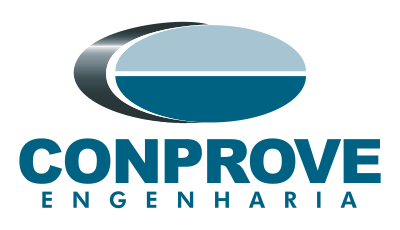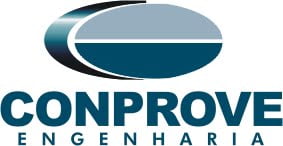Proven Quality
Excellence in the manufacture of electronic equipment demands special care at all stages: starting with the project, the choice of components, the selection and approval of suppliers and manufacturing partners, compliance testing, quality control, application engineering and after sales.
Attention to all these steps reflects in the final quality of the product, a quality whose main objective is the satisfaction of customers and users. In short, quality is not linked to a single characteristic or action, but to a sum of several conditions.
A quality product must present characteristics of reliability, compliance with technical standards, durability, ease of use, be complete in features, present excellent performance in its main and additional functions, in addition to committed after-sales.
We at CONPROVE have the mission of providing innovative solutions for the energy market, aiming to be a reference for the quality of our solutions. For this reason, different aspects are considered to guarantee the quality of our products, which stand out:
Integration with the supply chain
CONPROVE only uses components supplied directly by its manufacturers or by authorized distributors, with monitoring of each batch of components from manufacture to assembly on the printed circuit board. Temperature, humidity and electrostatic discharges (ESD) parameters are monitored throughout the process, ensuring that the components used are always in compliance and maintain the characteristics defined by the manufacturer and expected by the project.
Suppliers are constantly monitored by CONPROVE’s engineering team and follow strict quality protocols, in accordance with ISO 9001 and IPC 2221 standards, among others.
The transport, reception and storage of all material is carried out with a focus on preserving the original characteristics, demanding close monitoring and supervision. Every detail matters!
Good practices of individual and environmental management in the handling of components and PCBs
Several electronic components are vulnerable to ESD. Integrated circuits in general, oscillators, mosfets, among many other components, in addition to the PCB itself, can suffer the harmful effects of an electrostatic discharge.
The handling of the various devices sensitive to the effects of ESDs should only be done in a controlled environment, and by trained and equipped personnel. Failure to observe this important practice can lead to severe damage to electronic equipment.
CONPROVE has a series of good practices and environmental control to mitigate the emergence of harmful electrostatic charges, among the most important we can highlight:
– Temperature and humidity control of the manufacturing area, maintenance and storage of equipment and components;
– Use of dissipative trays for transport and packaging of PCBs;
– Use of protective packaging;
– Air ionizers to eliminate the accumulation of static charges;
– Work benches with conductive blankets – grounded dissipative;
– Use of individual equipment: wristbands, gloves, anti-static clothing;
– Periodic verification of effectiveness of all devices.
After carrying out the functional tests, all PCBs receive a protective conformal coating specific for electronic circuits, which further helps in the protection of the circuits from external actions and promotes electrical isolation.
All these precautions must be taken during the reception, storage, production and maintenance of the equipment, since the problems resulting from an ESD discharge may not be immediate, but lead to a decrease in the useful life of the affected components.
This special treatment that we have with our products is to ensure maximum quality, repeatability and accuracy of results. In addition, our equipment is packed in shielded and grounded boxes that protect all internal circuits from any harmful discharge.
Compliance and security testing
All CONPROVE test sets undergo severe shock and vibration tests during several stages: production, quality control and maintenance. These tests are based on the IEC 60068-2 and IEC 61326-1 standards and aim to ensure that the equipment supports the most varied conditions of use and transport to which it will be subjected.
In order to carry out the compliance tests, the equipment is subjected to different types of tests that simulate shock and vibration cycles with high levels of severity. In this aspect, we have the entire structure of specialized laboratories accredited by INMETRO (National Institute of Metrology, Quality and Technology), which are a reference in the most diverse conformity tests, following the test methods of national and international standards. Below is a list of the main norms and standards:
– IPC 2221 and IPC 9592-B
– IEC 61326 and IEC 61010
– IEC 61000-4-x and CISPR 16-x
– IEC 60068-2-x
It is only by following all applicable standards, with results proven by carrying out compliance tests in accredited laboratories, that you have the necessary security to guarantee that an equipment will work as defined by the manufacturer’s catalog in environments as hostile as those of a substation: large temperature variations, high situations of electromagnetic interference, presence of varied electric fields without suffering any type of external interference.
In CONPROVE’s laboratories, tests are carried out with and without the transport case on all equipment to ensure that all parts and plates are correctly fixed, without any type of slack, bad contact or any other type of malfunction.
To ensure the correct fixing of the screws, locks and chemical seals are used, in addition to pressure washers and nut and lock nut systems to ensure that the equipment maintains its physical integrity, precision and quality even after running for thousands and thousands of kilometers.
Interoperability with IEC 61850
To ensure the interoperability of our products (equipments and softwares) and guarantee their compliance with the IEC 61850 standard, we conduct rigorous international tests. The tests followed the IEC 61850 IOP interoperability testing programs, in accordance with the UCAIug testing procedures and IEC Standards and Guidelines.
During the tests, our products were subjected to interoperability situations with various IEDs (Intelligent Electronic Devices) widely used in the global market, always under the supervision of qualified witnesses. In all cases, our products demonstrated full performance and compliance.
High durability Transport Case
Test sets are developed as portable equipment, able to be moved to all test sites. The equipment itself is mounted in a high-strength aluminum box, specially developed for CONPROVE. This box provides the electrostatic shielding necessary for operation in severe conditions of electromagnetic fields, it is robust enough to protect all the embedded electronics and light enough to be easily transported. Transporting the equipment must always be carried out using the transport case supplied with the equipment.
The transport case that comes with the CONPROVE test sets is made of highly durable engineering plastic and follows strict quality and safety standards:
– MIL-STD 810F: is the standard used by the United States Armed Forces for the transport of weapons, electronics and sensitive materials.
– FED-STD-101C: American standard that governs non-military test conditions for packaging and transport devices;
– ATA 300: American standard that governs specification for packaging of airline supplies.
In addition to meeting these stringent quality and safety standards, CONPROVE cases feature wheels, telescopic retractable handle, loading handles, relief valves and internal pressure control and are water and dust resistant.
Internally, the cases have absorbent technical parts, made of EVA, foam or other similar material, capable of absorbing and filtering the vibrations, impacts, vibrations and shocks resulting from the natural process of transporting the equipment. They have areas specially designed to accommodate the test set, cables, small accessories and tools.
Own laboratory containing world-class measurement standards with traceability to the RBC (Brazilian Calibration Network)
For the correct calibration of generation and measurement equipment, it is good practice recommended by competent bodies that the equipment used as external standards have a precision at least three times better than the equipment under calibration. Attempting to calibrate precision equipment, which is the case with Conprove test sets, with incompatible external standards can have the opposite effect, generating an error in the values.
CONPROVE laboratories have advanced features, relying on world-class measurement standards, such as:
– Standard Class 0.01% multimeters for voltage, current, power and energy;
– 8.5 digit multimeters;
– 50 PPB time/frequency meter;
– Various shunts, for measuring currents up to 1000Arms.
All our measurement standards undergo an annual calibration process in renowned accredited laboratories, ensuring traceability to the RBC of all calibrations performed.
Rigorous software-assisted quality control
Quality control is the final step in the production process of an equipment and is used to measure the quality of the product, assessing whether it complies with its technical specifications. It makes the production process more unified as it gives it a standard and requirements to follow.
In order to guarantee standardization and reliability, CONPROVE uses internal software, developed exclusively for quality control and the issuance of certificates.
Automating the product quality certification process prevents some common mistakes from happening, such as human error in filling in data and incorrect use of production procedures.
In addition to providing standardization, automation makes the quality process faster and more efficient.
Issuance of a calibration certificate with traceability to the RBC
In order to guarantee the correct calibration of a generation/measurement instrument, it is necessary that several measurements are carried out, in conditions of different amplitude and frequency. In addition to measuring at several different points, it is necessary to repeat the measurement several times to raise the parameters of mean error, standard deviation and calculate the expanded standard uncertainty and accumulated total error.
Note that the calibration process is much more complex than just checking whether the equipment is accurate within or outside the parameters defined by the manufacturer, but errors and uncertainties of the instruments used in the verification / calibration process must also be considered.
Another very important factor is the traceability of the calibration certificate issued for the equipment. For this, it is necessary that the equipment be calibrated by a laboratory accredited to INMETRO or that the standards used in the calibration have been calibrated in an RBC laboratory and have the INMETRO seal.
At CONPROVE the test sets are subjected to an extensive calibration process, with more than 1000 points being evaluated. The measurement of each point is repeated 10 times, totaling more than 10,000 individual measurements performed, all this so that we can issue a calibration certificate with the precision, reliability and traceability that test sets demand.
All this care is necessary to ensure that our customers can focus on their business with the certainty that CONPROVE equipment is always able to perform the work with the expected precision and quality.





